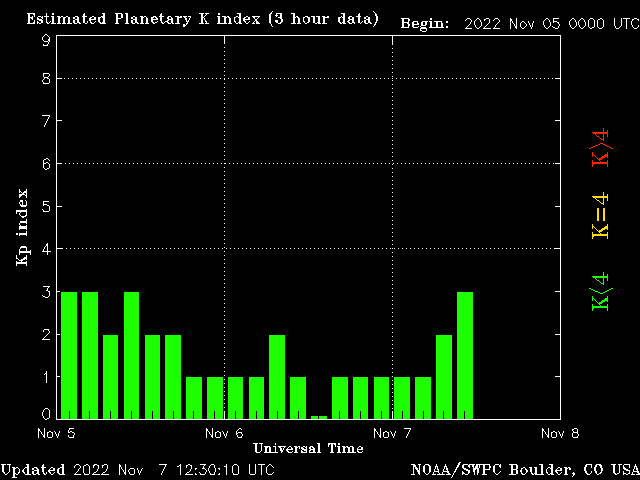
Dials showing IMF orientation, solar wind speed, and dynamic pressure. Copyright Space Environment Center.

Dials showing IMF orientation, solar wind speed, and dynamic pressure. Copyright Space Environment Center.

This plot estimates the visibility of auroral activity from any
location on the northern hemisphere, assuming a dark moonless sky
and low light pollution. The estimated brightness of the aurora
is plotted in a solid color ranging from green (low levels) to
brown/orange (moderate levels) to red (high levels of activity).
The brighter the red, the more intense the activity. Copyright Spacew.com

For a map showing the Earth with equatorward boundaries as a function of the Kp-index (i.e. from where you can see an aurora at a certain Kp level, select one of the following links:

This plot shows the current extent and position of the auroral oval in the northern hemisphere, extrapolated from measurements taken during the most recent polar pass of the NOAA POES satellite. Copyright Space Environment Center.

This diagram indicates the i) solar wind speed and ii) strength of the interplanetary magnetic field (IMF) in a north/south direction. Higher solar wind speeds and strong south pointing (negative) IMF are associated with geomagnetic storms on earth. The red area on the image indicates an approximate region in which disturbed conditions might be expected. Copyright IPS Australia.
![]()